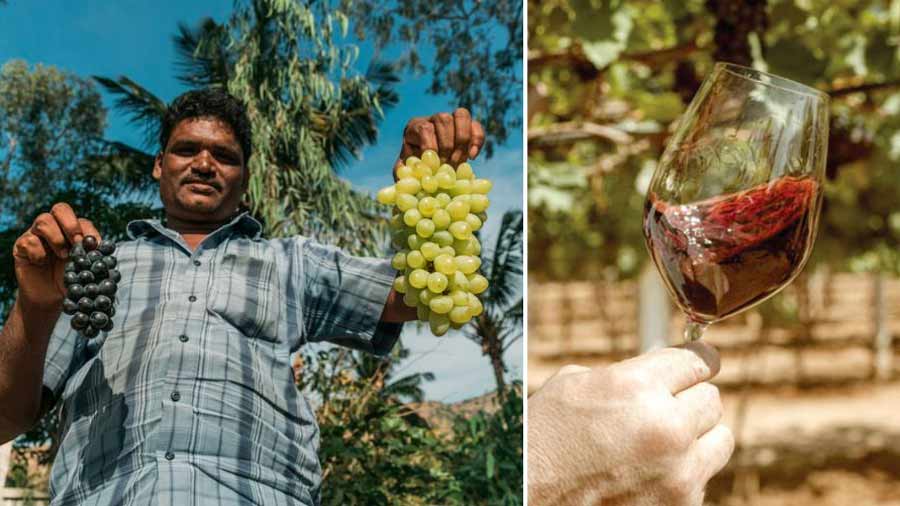Very few celebrations or special occasions across the country are complete without the bubblies and (fermented) grape juice from Sula Vineyards, Nashik — the pride and joy of India’s wine industry. Nestled amidst the picturesque hills of Gangapur in Maharashtra and embraced by the Satmala mountain range, is the establishment that offers a tranquil yet unparalleled off-the-grid experience. My Kolkata takes you on a fizzy journey as you raise a virtual toast to this incredible tale of dreams becoming reality.
Where the journey began…
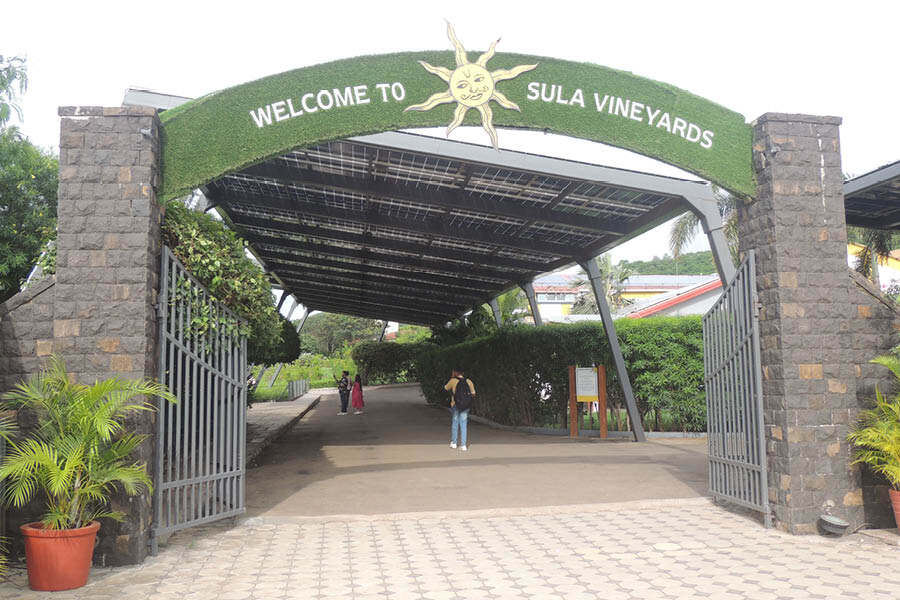
The entrance to Sula Vineyards from the parking lot
In the early 1990s, Rajeev Samant, the CEO and founder of Sula Vineyards, then a Stanford-educated executive working at Oracle in California, surprised everyone by returning to his hometown in Nashik. His initial visit to hs family-owned farmlands, on the fringes of the Gangapur Dam, sparked the dream of growing wine grapes in Nashik. Realising that such an audacious task was possible though daunting, Samant spent a short stint at a small winery in California, owned by his friend and mentor Kerry Damskey — the master winemaker of Sula Vineyards today. Having gathered information through his work experience, Samant founded Sula Vineyards in 1996. Interestingly, the name ‘Sula’ is derived from Samant’s mother’s name, Sulabha. Additionally, the Sula logo, which is so familiar today, features a welcoming sun with a moustache and tilak, signifying its Indian roots.
Early days
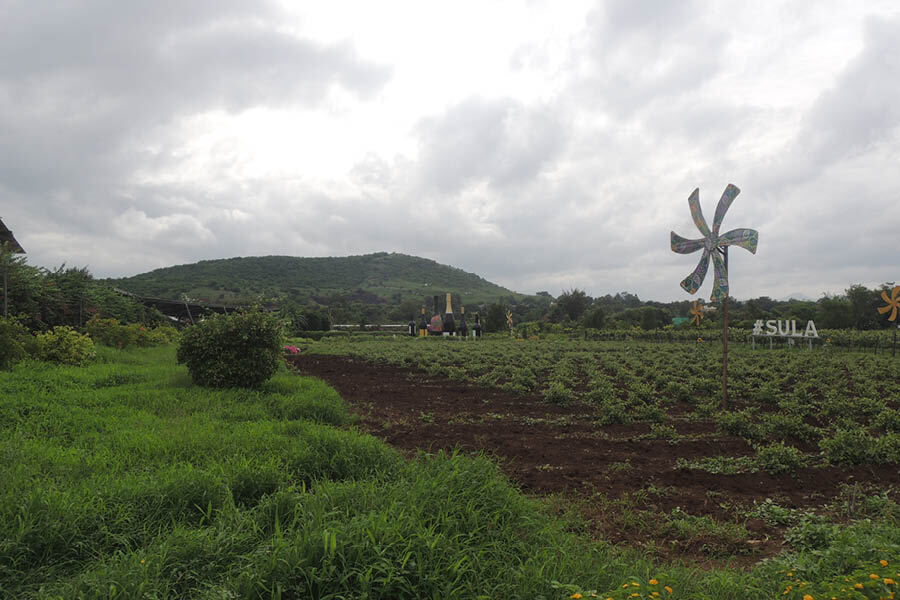
A stretch of the grape growing areas with the vineyard
The initial days of Sula wines were full of anticipation, with the first bottle of Sauvignon Blanc being sold in 2000. But as we see today, the company’s products are synonymous with good and classy times, not just in India but across the globe. Sula Vineyards has gained a well-deserved foothold among the established best in the industry worldwide. Rajeev Samant is also recognised as a leading advocate for India’s wine industry and is actively sought out to represent the interests of India’s wine producers and farmers to national and state governments.
A visit to the Sula vineyards unfolded the story in Samant’s own words. Through a video message for visitors, Samant described the winemaking process — from planting grapes to harvesting at the right moment, fermenting, seasoning, ageing and eventually bottling for retail — and narrates how Sula Vineyards was the first in the country to start wine tourism, with the nation’s first wine-tasting room at the vineyard established in 2005. Today, the Sula vineyard experience is multifaceted. It offers visitors a chance to witness and understand the entire winemaking process. They can immerse themselves in the popular Sula Music Festival, featuring artistes from across the country, enjoy a variety of dining options with unforgettable delicacies and also indulge in a luxurious stay in the lap of nature.
The making of wine
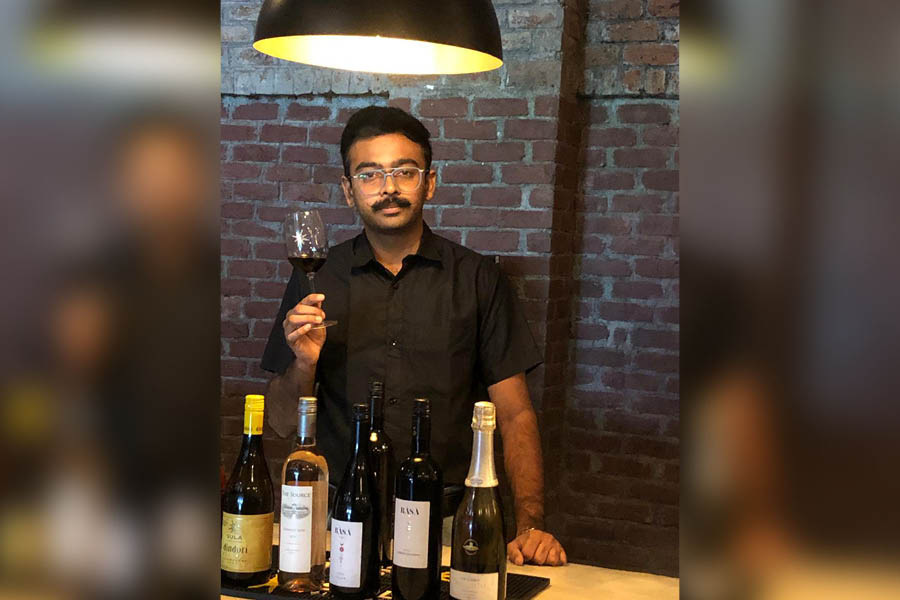
Sommelier Bhavesh Patil, Tour & Tasting executive at Sula Vineyards, holds a glass of the wine they are all so proud of
Speaking to us, Sommelier and Tour & Tasting executive Bhavesh Patil explained the intricacies of winemaking. “The first step is harvesting. Experts visit the vineyards daily to collect random samples to ascertain the proper balance of sugar and acidity. A viticulture team harvests the yield manually and the grapes are then brought to the crushpad, where the de-stemmer separates the stems from the grapes. They are then put into the pneumatic balloon press, which uses the balloon to gently press the grapes, separating the juice and seeds. Around 35 tons of grapes can be crushed at a time, which generally takes about an hour. Dry ice is introduced at this stage to repel oxygen, which helps preserve the grapes and makes them safer for the end process. The thermo heat exchanger then takes over, transporting the grapes and helping to lower the temperature to extend their longevity during fermentation. Depending on weather conditions, grape harvesting is specific to different fields and locales — and crushing depends on the availability of the grapes.”
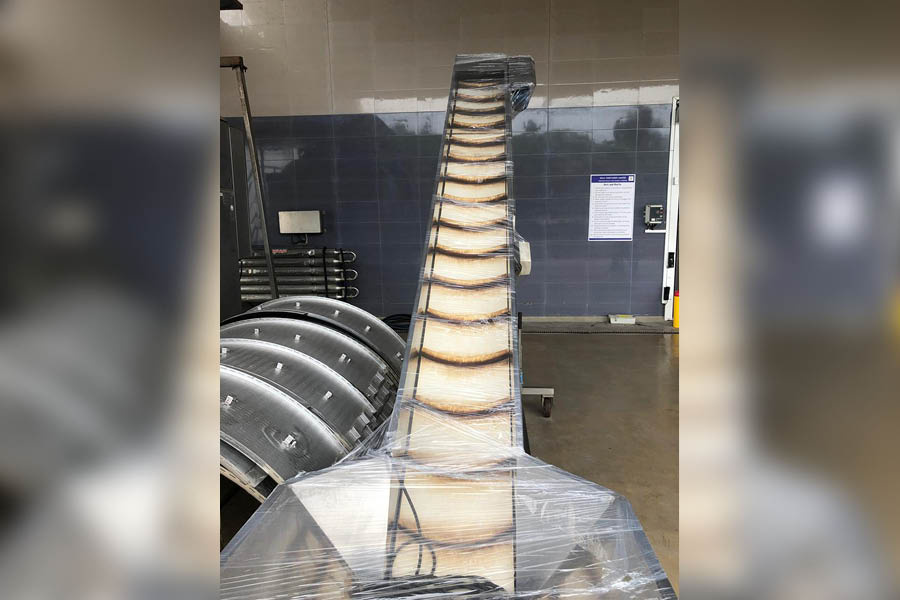
Machinery at the crush-pad
Elaborating further, Patil explained how Indian-made tank cellars with an outer aluminium layer and an inner stainless steel tank (SS361), specifically designed for fermentation purposes are used. A freezing compound (glycol) between the layers maintains the temperature, which can be manually controlled. For white wines, the temperature is kept lower, while for red wines, it is kept higher. The introduction of yeast converts sugar in the grape juice into carbon dioxide and alcohol. The alcohol contributes to the body of the wine, while the CO2 is released into the atmosphere.”
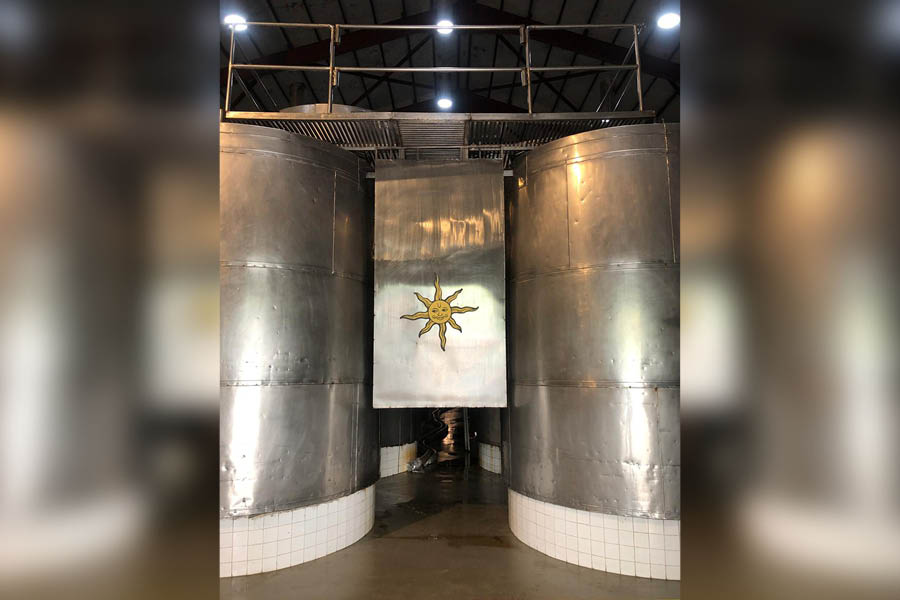
A view of the double-layered storage and fermentation tanks
The differences between red and white wines begin with the grapes, explained Patil. Red wine is made from black grapes because the tannins on the surface aid in obtaining the right colour. “Some tanks have two openings, others have only one. This is important for making red and white wines, as for red wines, the heavier residue settles towards the bottom, while the juices stay on the top. The capacity of the tanks ranges between 90,000 and 180,000 litres, but they come in smaller sizes as well. The wines also need to be racked from time to time,” he said.

Inside view of the section housing the fermentation tanks where a racking process is being carried out
The next step in winemaking is ageing, and at Sula Vineyards, the wine is aged in Demptos oak wood casks, which are imported from France. These barrels, produced by a company founded in 1825 in Saint-Caprais-de-Bordeaux, are known for their craftsmanship. A single barrel costs around Rs 60,000. Despite India having its own oak trees, government regulations prevent felling, so the barrels need to be imported. Currently, about 30 per cent of Sula wines are aged, while the remaining 70 per cent are meant to be consumed young and fruity — a pattern dictated by current market demands.
The challenges of a young industry
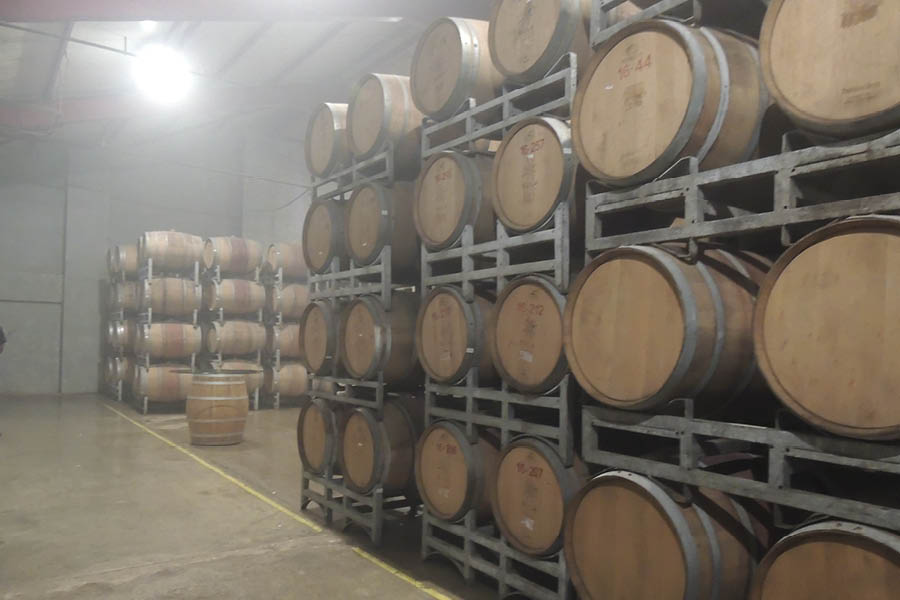
Ageing gracefully in the oaken casks — Sula's wonders wait patiently
It is important to mention that the ageing process also adds to the cost, making the wine more expensive. Within the customised ageing environment, the temperature needs to be controlled to prevent the wood from drying out and potentially developing cracks.
Sadly, as Sula executives pointed out, the Indian market is not yet fully ready for barrel-aged wine, as the culture of wine tasting and consumption is still new in the country. The industry also suffers due to the limited availability of educated and trained staff. While European countries have extensive rules and regulations governing the wine industry, Indian regulations are relatively relaxed. Although no specific benefits are currently offered to winemakers, various policies supporting farmers indirectly contribute to the growth of the wine industry.
Indian wines in the global context
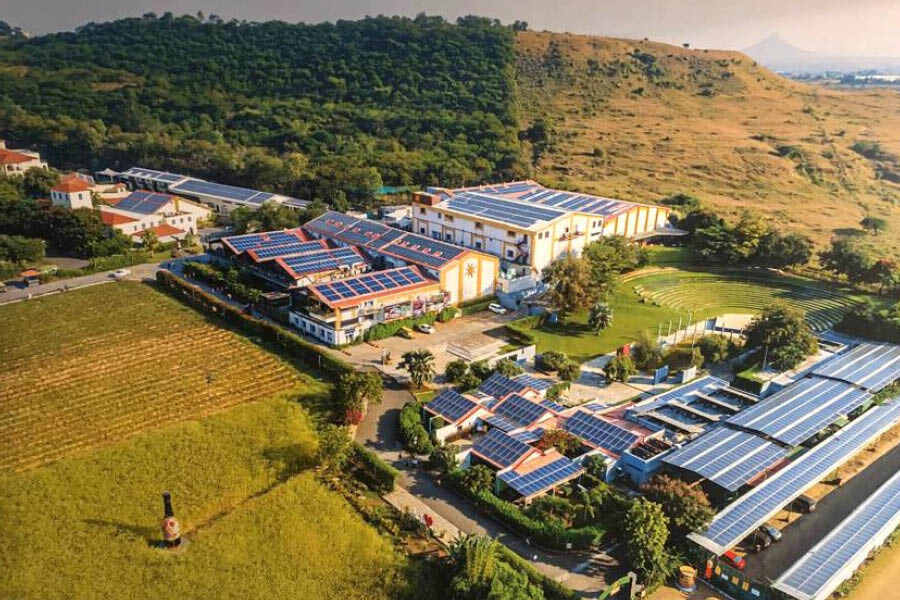
An aerial view of Sula Vineyards
Indian wines are quite new to the market, with a history spanning only about two decades. European winemakers have a three-century advantage and more than seven generations of experience in making and consuming wines. Pitting our own products against such competitors is an uphill task, but the inroads are already happening. Indian wines are gaining recognition and appreciation. Sula Vineyards has already won two world gold medals — one for Tropical Rose (2022) and one for Rasa Cabernet Sauvignon (2024).
This is particularly noteworthy given the harsher conditions in India compared to other parts of the world. Sula is also working to raise awareness of wine among the younger generation, offering six varieties of wine for tasting and emphasising wine etiquette, which is important for the sustenance of the industry.
Why grapes and Nashik pair well
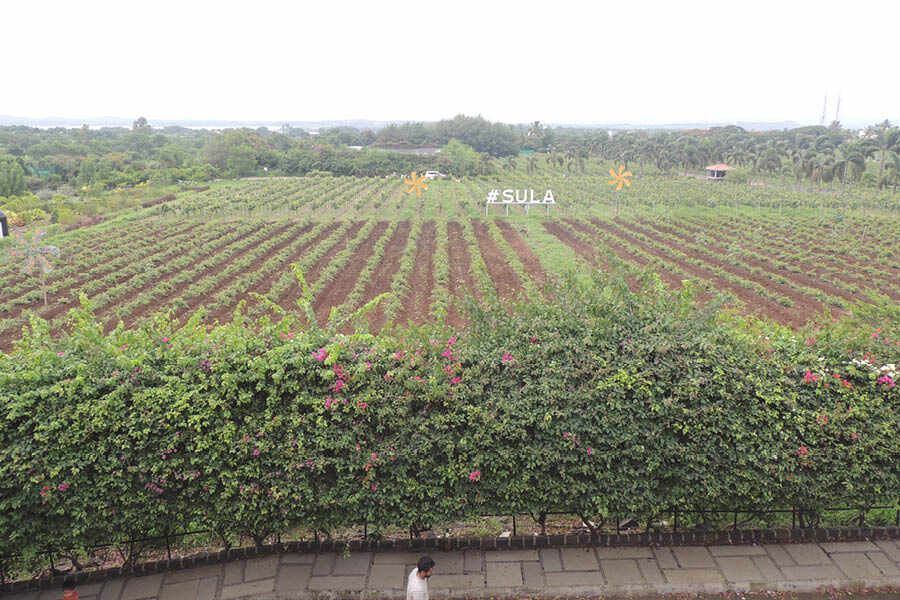
The alluring vineyard with the vast stretch of the Gangapur Dam waters
Over the last two decades, Sula has made Nashik the home and epicentre of wine in the country. Much of this is due to the region’s favourable climate that supports growing of wine grapes. The grapes bought in Indian markets are generally table grapes or Thomson varieties, which are much larger in size. With thin skins and high sugar content, these are not suited for winemaking and are genetically modified for eating purposes. Grapes grown for winemaking are smaller, perfectly balanced in terms of sugar content and acidity and have more seeds. The harvesting season in India is from January to March, when Nashik’s sunny, warm days lead to increased sugar content in the grapes, and cool nights ensure the right acidity. Such an ideal environment is not present in other reaches of the country and that factor has contributed significantly in making Nashik the wine capital of India.
Sula Vineyards’ proud offerings
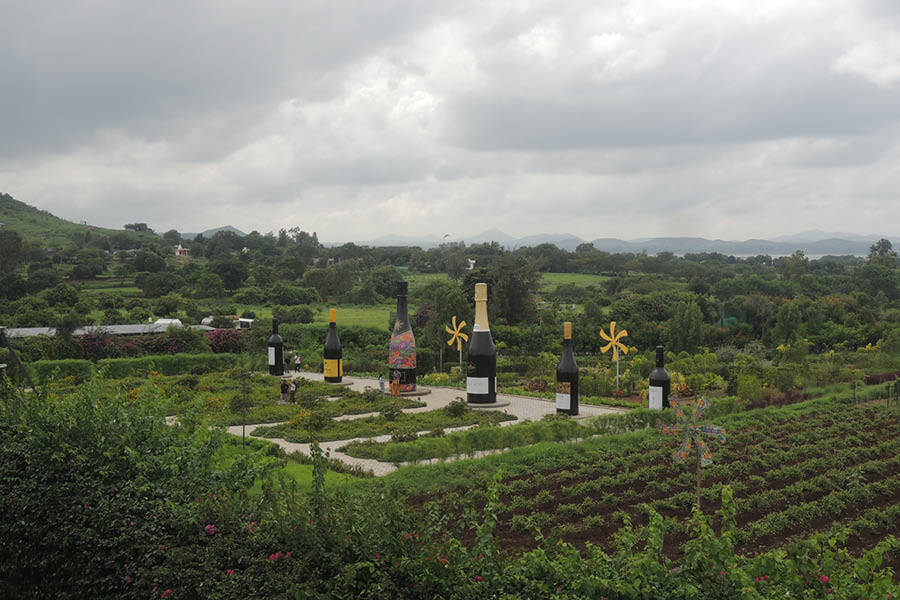
Some giant size recreations of the best of Sula produce
Sula Vineyards offers a product for every palate and choice, one of which is sparkling wine. It is important to understand the difference between sparkling wine and champagne. Champagne is not a type of wine but the name of a place where the wine is made, and the makers have named the wine after the place. Copyright issues determine that the name be not used anywhere. Sula produces ‘sparkling wine with bubbles,’ creating its unique identity.
The second category is wine without bubbles, or table wine, which includes subcategories like white, red and rosé. It may be mentioned that every part of the world has its own varieties of grapes but as ethnic or local names are not always as well known, the more popular international names have been retained. This is true for Sula as well.
Sula Vineyards produce come under some broadheads, namely Rāsā, The Source and Dindori. The Rāsā range, including Rāsā Cabernet Sauvignon, Rāsā Syrah and Rāsā Zinfandel, is crafted through artisanal winemaking and selective viticultural practices. The Source collection features varieties such as Pinot Noir, Moscato, Grenache Rosé and Chenin Blanc Reserve, which are noted for their rich aromas of pear, pineapple, and citrus, along with a sweet vanillin flavour from oak barrels. This range also includes Cabernet Sauvignon and Sauvignon Blanc, which are prominent in the Indian wine market. The Dindori range, on the other hand, offers the fruity Dindori Reserve Viognier, the lemony and buttery Chardonnay, and the spicy, smoky Shiraz with red fruit notes — all of which have become significant contributors to the Indian wine industry.
Championing wine tourism with luxurious vacations
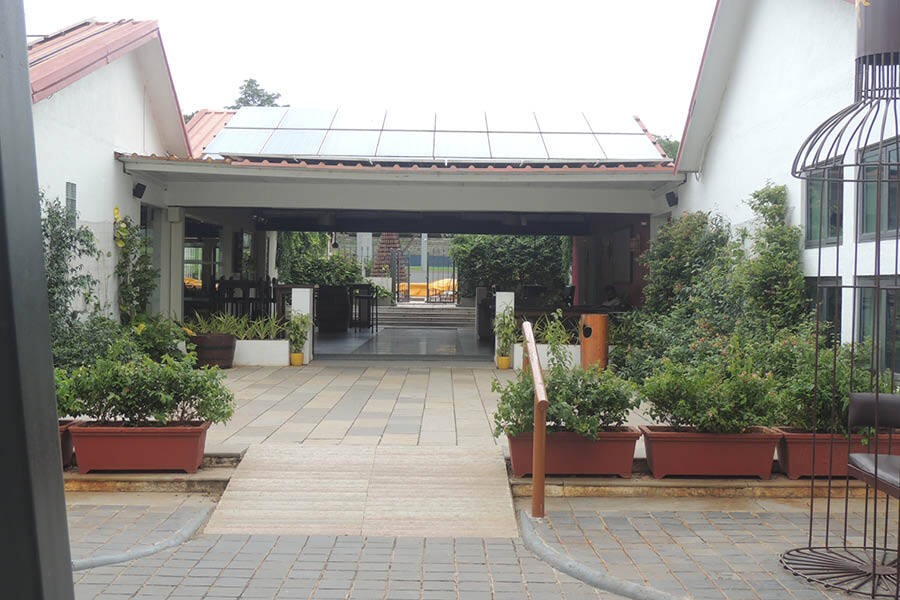
The Rasa restaurant entrance
Sula Vineyards has always been a pioneer in India, known for its uniqueness and unforgettable experiences. Not only does Sula produce exceptional wines, but it has also made significant strides in wine tourism and luxury accommodations. Top on that list is The Source, a resort launched in 2017, situated amid the original wine-making structures. Overlooking the first Sula fields and the expansive Gangapur Dam, The Source spares no effort to maintain the legacy of the place.
Just a short distance from the Sula Vineyards premises is ‘Beyond’, which offers a breathtaking panorama of the tranquil lake and Nashik’s countryside. A favourite among actors from the Hindi film industry and others, Beyond is described as the ‘sanctuary where modern luxury meets the beauty of nature’.
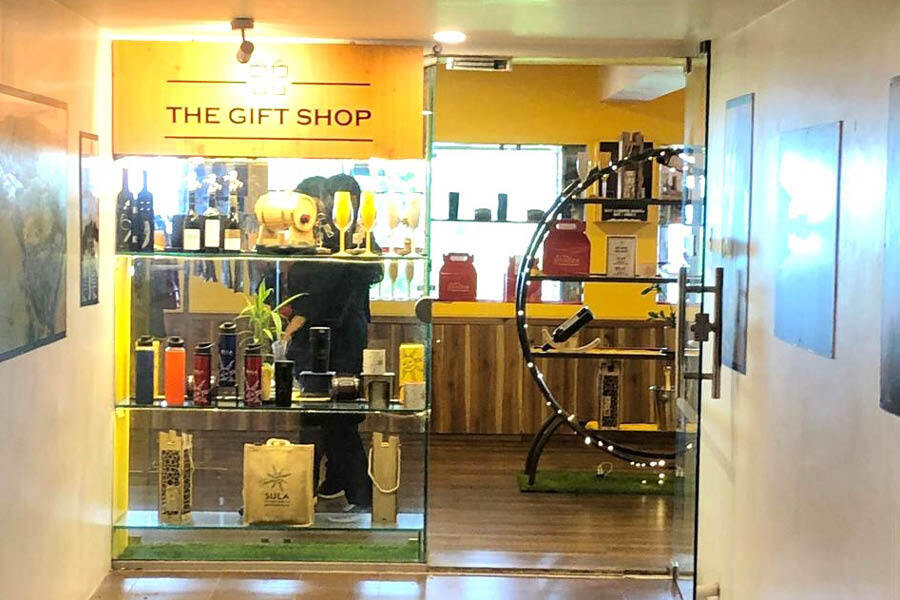
Entrance of the well stocked gift shop of Sula Vineyards
Sula’s bottling plant at Dindori, the Domain Sula winery in Bengaluru (India’s first heritage winery), and the nearby York Winery, also under Sula’s umbrella, draw countless visitors from across the country and beyond.
Travel details
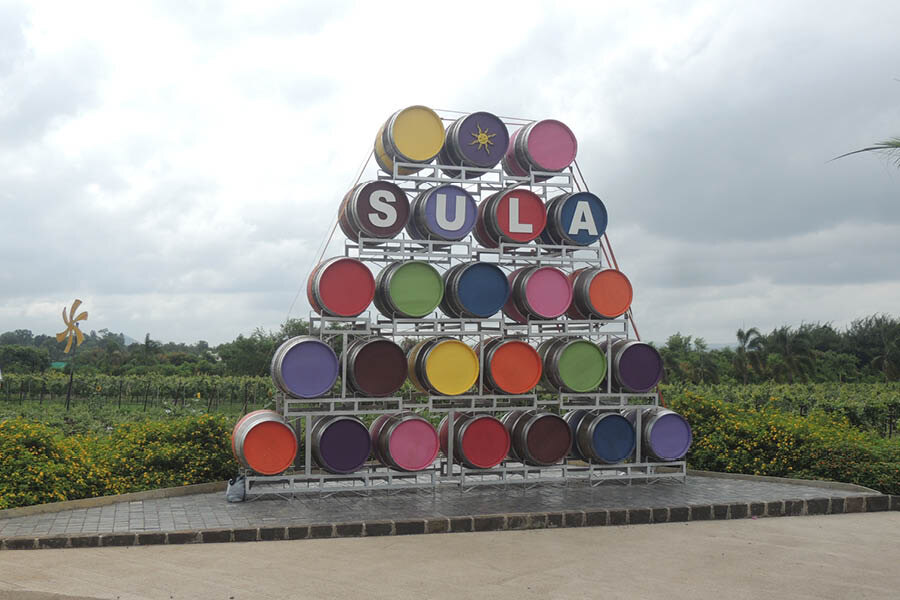
One for the photo memoirs
Sula Vineyards has a cover charge of Rs 600, primarily for crowd management due to its growing popularity. This fee serves as a filter to ensure that visitors are genuinely interested in contributing to the experience. The coupon is something that one has to buy and it is treated as a currency within the premises. It can be used towards any charges on the premises. Beyond this, visitors can use standard payment methods for additional expenses.
For the tour and tasting, identification with age-proof is required. The cover charge is fully applied to the tour, which costs Rs 200, and the tasting, which costs Rs 400. On weekends and national holidays, these costs are Rs 300 and Rs 700, respectively.

